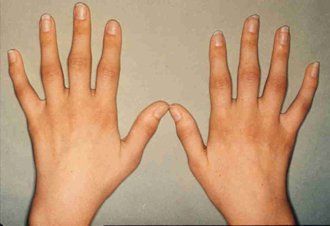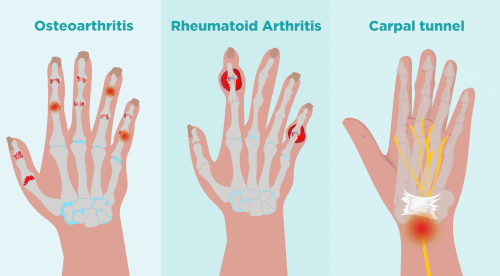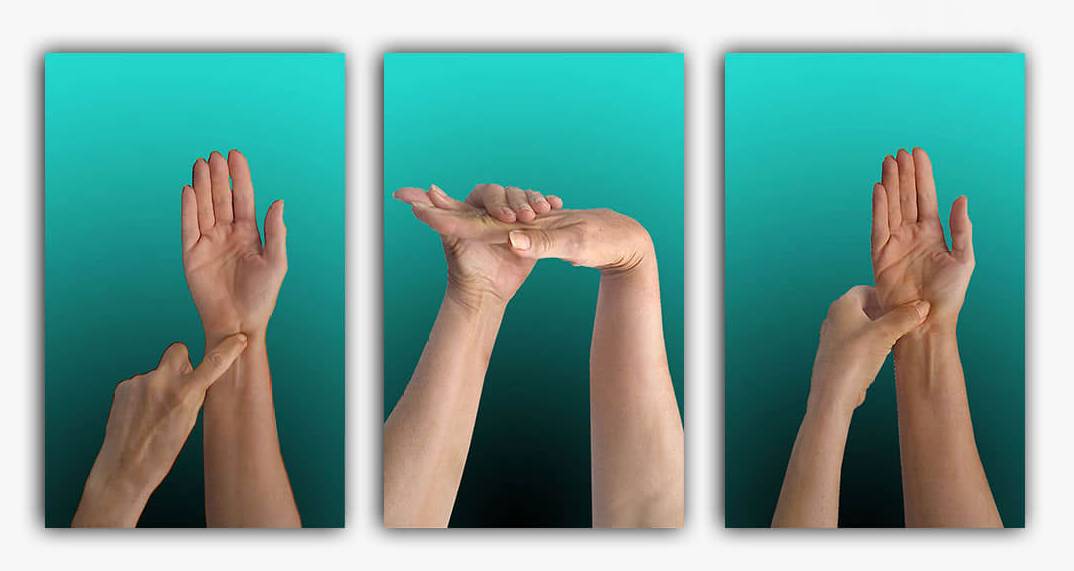Is it Carpal Tunnel or Arthritis?
Table of Contents
- Symptoms of carpal tunnel syndrome
- Symptoms of arthritis
- Osteoarthritis symptoms
- Rheumatoid arthritis symptoms
- Similar symptoms: carpal tunnel vs arthritis
- Summary
If you're having pain or burning in one or both hands, you may be wondering if carpal tunnel syndrome or arthritis are causing the symptoms. While both conditions can cause similar symptoms, there are several very important differences between the two disorders.
Unlike arthritis, carpal tunnel syndrome can also cause weakness, tingling, shooting electric shocks, or numbness in the hand and fingers. But like carpal tunnel, arthritis can also cause pain and make it difficult to grasp things. However, the symptoms happen for different reasons. Specifically, carpal tunnel syndrome is caused by
nerve compression
while arthritis is caused by
inflammation
and damage to your joint.
Carpal tunnel and arthritis are the two
most common hand pain problems in the USA today. So it's important to distinguish between the symptoms of each one, as described below. It takes only a few simple steps.
Be aware that in the early
stages of rheumatoid arthritis (RA) it’s very difficult to diagnose it from carpal tunnel syndrome unless you're given a thorough examination, including blood work.
Symptoms of carpal tunnel syndrome
Carpal tunnel syndrome is a type of
neuropathy. It means you have nerve damage deep inside your wrist joint. It happens when the tendons inside your wrist joint become irritated and start to swell. Over time, that swelling increases and produces dangerous fluid pressure.
The increasing fluid pressure starts to squeeze and compress all of the other adjacent tissues inside the wrist joint. One of those tissues being compressed is the
median nerve. Not surprisingly, nerves react very badly to compression.
The compression causes the median nerve to produce abnormal feelings or
symptoms. These
carpal tunnel symptoms can be one or more of the following in the hand or fingers:
With carpal tunnel syndrome, the thumb and index fingers are often most involved. They are usually the most numb or painful. But the little finger
never has symptoms.
Swollen fingers or a swollen hand is usually not a primary symptom of carpal tunnel syndrome (vs arthritis -- where swelling is common). However, patients with carpal tunnel syndrome usually report the sensation of swelling even though their hand or fingers look normal.
Pain or numbness are usually present even when your hand is resting. In fact, one of the main
signs of carpal tunnel syndrome is that you wake up at night to "shake out" numb hands or "rub out" hurting fingers.
With carpal tunnel syndrome, hand weakness causes loss of
hand grip strength. It usually affects the entire hand. Signs of this weakness manifest as "clumsiness". It becomes hard to tie a shoelace, pick up a key or coin, or even button a shirt.
As carpal tunnel gets to a more
severe stage patients begin to lose sensitivity to hot or cold in their fingers. Eventually, the thumb muscle atrophies (degenerates) or flattens out.
Doctors can use specific tests to distinguish you have carpal tunnel syndrome (vs arthritis). These "provocative tests" are easy to do and are a good diagnostic for carpal tunnel. You can do them on yourself by
following these instructions.
And if you have carpal tunnel already,
this Quiz can determine its severity.
Important Statistic: Your chances of having carpal tunnel syndrome can almost double if you already have rheumatoid arthritis.
Symptoms of arthritis
Arthritis is one of man's oldest diseases. The name comes from ancient Greek meaning "inflammation in the joint". In the American population, there are 2 types of arthritis that are most prevalent;
osteoarthritis
and
rheumatoid arthritis.
Osteoarthritis symptoms
Osteoarthritis is the most common form of the disorder. It's actually a “wear & tear” problem in the joints.
Usually, osteoarthritis comes with aging. As joints age, they wear down their protective
joint cartilage. As a result, bones grind against one another. This produces pain and stiffness which greatly limits the joint's motion. The most common places it occurs are the hip and knee joints.
Symptoms of osteoarthritis include:
- Pain in the affected joint during or after movement
- Joint stiffness and tenderness
- Feelings of "grating" or "grinding" as the joint moves
- Swelling and loss of mobility or flexibility
Rheumatoid arthritis symptoms
In contrast to osteoarthritis, rheumatoid arthritis or "RA" is the disease doctors have more difficulty diagnosing. That's because it can mimic other diseases - most notably carpal tunnel syndrome. In fact, doctors often confuse and
misdiagnose symptoms of carpal tunnel vs arthritis of the rheumatoid type.
Rheumatoid arthritis affects the entire body. The disease causes a malfunction in the
body's defense mechanism against foreign invaders like bacteria.
The result is that the body attacks itself - usually its own joints. Most commonly it affects joints in the feet and hands. Sometimes it can also cause pain or restrictions in the neck, shoulders or elbow.
Symptoms of rheumatoid arthritis include:
- Stiff, swollen, warm or tender joints
- Fatigue, fever or loss of appetite
- 40% of RA patients also have symptoms in other body parts as well as in their joints
There isn't one physical exam or even a single blood test to confirm rheumatoid arthritis. But there are multiple blood tests along with MRI and X-rays to help narrow down if you have carpal tunnel or arthritis.
Rheumatoid arthritis is treated in several ways. Doctors can prescribe
medicines such as immunosuppressants, NSAID drugs, and corticosteroids. Patients are also encouraged to have physical therapy, do stretching exercises, use
heat, and make
lifestyle changes to avoid flare-ups. New studies suggest that
certain supplements significantly reduce the inflammation due to RA.
Similar symptoms: carpal tunnel vs arthritis
Diagnosing whether your symptoms are from carpal tunnel or arthritis is more challenging to doctors in the
early stages of
rheumatoid arthritis. The reason is because the hand, finger or wrist pain that patients feel is almost identical in the 2 disorders.
Symptoms which both conditions share are:
- Throbbing or dull pain in the joints
- Pain during most of the day (happens with more advanced carpal tunnel)
- Tenderness
- Feeling of hand or finger puffiness (in carpal tunnel, the feeling is present but there is no actual swelling)
- Pain wakes you up at night
Once again, in the early stages of rheumatoid arthritis, the differences between it and carpal tunnel are very subtle. You will need to perform carpal tunnel
provocative tests as well has have blood and other tests for rheumatoid arthritis to be sure.
Whether your pain is due to carpal tunnel vs arthritis, pain medicines like
NSAIDs (Advil, Aleve, Motrin and Tylenol) can temporarily relieve the discomfort.
As time goes on, the systemic effects of rheumatoid arthritis begin to take hold. This is when more advanced symptoms of RA begin to show. They include fatigue, fever or loss of appetite.
This is when it's easier to distinguish RA from carpal tunnel syndrome: carpal tunnel will not cause those advanced RA symptoms. Actually, symptoms of carpal tunnel remain in the hand, fingers and wrist. It's also common for carpal tunnel pain to feel like
electric shocks shooting up the forearm or into the fingers.
Summary
Symptoms of carpal tunnel vs arthritis can be similar. Most commonly, they produce severe pain in the hand and fingers. In the early stages of rheumatoid arthritis, it's hard to tell the difference from carpal tunnel syndrome.
About








